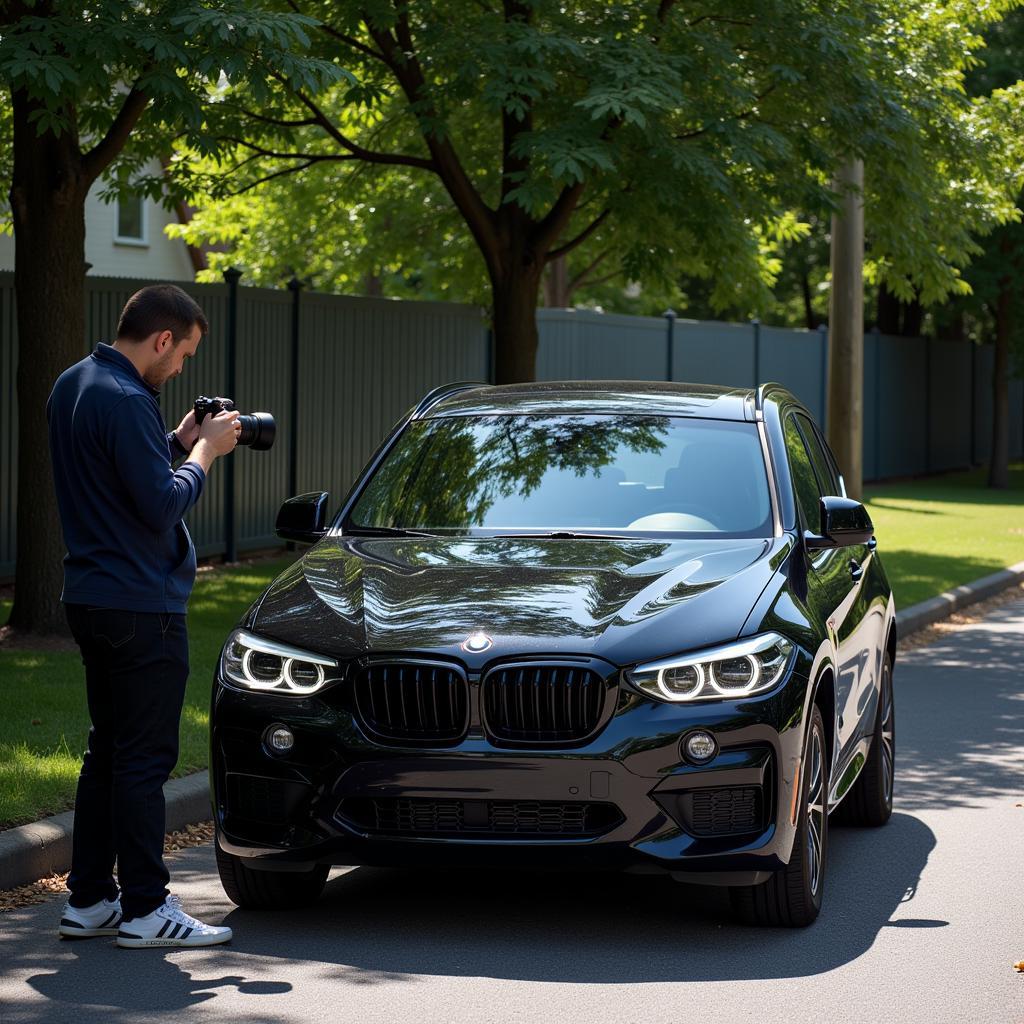Removing unwanted reflections from car photos is a common challenge in automotive photography and retouching. Whether you’re a professional car photographer, a dealership showcasing inventory, or an enthusiast perfecting your car’s portrait, knowing How To Fix Car Reflections In Photoshop is an essential skill. This guide will equip you with the techniques and knowledge to achieve flawless, reflection-free car images.
Understanding Car Reflections and Their Causes
Reflections on car surfaces can stem from various sources, including surrounding objects, the sky, and even the photographer themselves. These reflections can detract from the car’s appearance and create a distracting, unprofessional look. Identifying the type and cause of the reflection is the first step towards effective removal.
Common Types of Car Reflections
- Environmental Reflections: These are reflections of trees, buildings, and other objects in the car’s environment.
- Sky Reflections: These are reflections of the sky, often appearing as bright spots or streaks on the car’s paint.
- Photographer Reflections: These are reflections of the photographer or their equipment, sometimes visible on the car’s windows or body.
Techniques for Fixing Car Reflections in Photoshop
Several Photoshop tools can be employed to address car reflections, each offering unique advantages depending on the specific situation.
Using the Clone Stamp Tool
The Clone Stamp Tool is a powerful tool for removing unwanted elements by copying pixels from one area of the image to another. This is particularly useful for removing small, localized reflections.
- Select the Clone Stamp Tool from the toolbar.
- Choose a source area by holding down the Alt key (Option key on Mac) and clicking on a clean, reflection-free area of the car.
- Carefully paint over the reflection using the sampled pixels.
Utilizing the Healing Brush Tool
The Healing Brush Tool works similarly to the Clone Stamp Tool but blends the sampled pixels more seamlessly with the target area, creating a more natural-looking result. This is particularly effective for removing reflections on curved surfaces.
- Select the Healing Brush Tool.
- Choose a source area by holding down the Alt key (Option key on Mac) and clicking on a clean area.
- Paint over the reflection, observing how the sampled pixels blend with the surrounding area.
 Using the Healing Brush Tool to Remove Reflections
Using the Healing Brush Tool to Remove Reflections
Leveraging Content-Aware Fill
Content-Aware Fill is a powerful feature that analyzes the surrounding pixels and intelligently fills in the selected area. This is particularly useful for removing larger reflections or reflections on complex surfaces.
- Select the area containing the reflection using the Lasso Tool or other selection tools.
- Go to Edit > Fill.
- Choose “Content-Aware” from the Contents dropdown menu.
- Click OK.
Working with Layers and Masks
Using layers and masks allows for non-destructive editing, preserving the original image while making adjustments to reflections. This offers greater flexibility and control over the retouching process.
- Duplicate the background layer.
- Apply your chosen reflection removal technique to the duplicated layer.
- Create a mask to selectively hide or reveal the edited areas, blending the changes seamlessly with the original image.
How to prevent car reflections during a photoshoot?
One of the easiest ways to prevent reflections is to use a polarizing filter. This filter will reduce the amount of light that is reflected off of the car, which will in turn reduce the number of reflections.
Another way to prevent reflections is to shoot in the shade. This will eliminate any direct sunlight that is hitting the car, which will again reduce the number of reflections.
Finally, you can also try to position yourself so that you are not directly in front of the car. This will help to prevent your reflection from showing up in the photo.
“Proper planning and attention to detail during the photoshoot can significantly reduce the need for extensive post-processing,” says John Miller, a seasoned automotive photographer.
 Preventing Car Reflections During a Photoshoot
Preventing Car Reflections During a Photoshoot
Conclusion
Mastering how to fix car reflections in Photoshop is a valuable skill for anyone working with car photography. By understanding the different types of reflections and utilizing the appropriate Photoshop tools and techniques, you can achieve stunning, reflection-free images. Remember, practice and experimentation are key to refining your skills. If you need assistance with your automotive photography needs, feel free to connect with AutoTipPro. Our team of experts is ready to assist you. Contact us at +1 (641) 206-8880 or visit our office at 500 N St Mary’s St, San Antonio, TX 78205, United States.





Leave a Reply